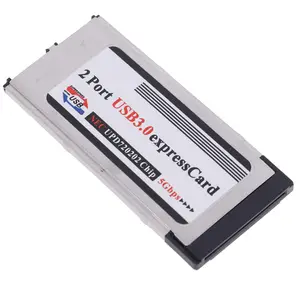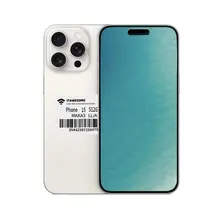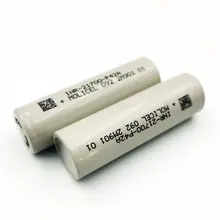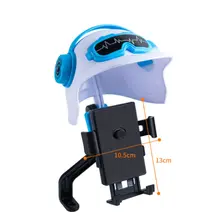The PCMCIA card adapter serves as a vital conduit, facilitating the integration of outdated laptop systems with contemporary peripheral demands. This device is indispensable for those seeking to enhance the connectivity of older laptops endowed with PCMCIA (Personal Computer Memory Card International Association) slots, thereby enabling the use of modern devices and memory cards.
Types and Characteristics of PCMCIA Card Adapters
There exists a multitude of PCMCIA card adapters, each crafted to address distinct user requirements. The PCMCIA to USB adapter, for example, is perfect for bestowing USB functionality upon antiquated laptops, whereas the PCMCIA CF (Compact Flash) adapter is designed with photographers in mind, simplifying the transfer of images from camera to computer. The Mercedes PCMCIA card is yet another specialized variant, intended for the upgrade of in-car systems in Mercedes automobiles. Each adapter variant possesses its own set of attributes, such as data transfer rates and compatibility with various memory card formats, to meet the varied needs of users.
Structure and Operation of PCMCIA Card Adapters
The architecture of a PCMCIA card adapter is ingeniously simple. It comprises a card-like shell that encapsulates the electronic components required to connect with the PCMCIA slot. Within this shell lie connectors tailored to the specific card type it supports, be it USB, CF, or SD cards. The adapter converts the data from the attached device or memory card into a format that the PCMCIA slot can process, thereby augmenting the laptop's functionality.
Materials and Properties of PCMCIA Adapters
The construction of PCMCIA adapters utilizes materials selected for their robustness and electrical characteristics. Plastic, favored for its insulating qualities and lightweight, is typically employed for the adapter's body. Metals such as aluminum or copper might be utilized for the connectors and exterior to provide a solid framework and ensure optimal electrical conductivity. These materials also boast resistance to wear and tear, a critical feature for devices that undergo regular insertion and removal from PCMCIA slots.
Business Usages and Applications of PCMCIA USB Adapters
In the commercial sphere, PCMCIA USB adapters are prized for their adaptability. They find applications across various sectors, from the automotive industry, where they are instrumental in updating navigation systems, to the realm of photography, where they enable the swift transfer of voluminous files. In the field of IT, these adapters play a pivotal role in connecting archaic systems to contemporary peripherals, thus prolonging the service life of older hardware. Their capacity to facilitate rapid adaptation and connection between disparate devices generates considerable business value by conserving time and resources.
Functions of PCMCIA Card Adapters
The fundamental role of a PCMCIA card adapter is to transform the PCMCIA slot into a functional interface for various cards and devices. This encompasses tasks such as data reading and writing to memory cards, or the connection of peripheral gadgets like keyboards, mice, and external storage solutions. The adapter enables these operations typically without the necessity for additional drivers or software, offering a seamless plug-and-play experience.
Features of PCMCIA to USB Converters
PCMCIA to USB converters are distinguished by features like hot-swapping, which permits the connection and disconnection of devices sans the need to restart the laptop. They also support swift data transfer rates, making them apt for scenarios demanding rapid data retrieval. Such attributes are particularly advantageous for users who manage data across a multitude of devices with efficiency.
Benefits of Using a PCMCIA SD Card Adapter
Employing a PCMCIA SD card adapter brings the advantage of ease, enabling straightforward data transfers from SD cards to laptops. This proves especially beneficial for professionals who require expedited access to or backups of photographs and documents. Moreover, the adapter contributes to the extension of older laptops' lifespans by incorporating features typically exclusive to newer models.
How to Use and Maintain a PCMCIA Adapter
To operate a PCMCIA adapter, one simply inserts it into the laptop's PCMCIA slot and then connects the relevant card or device to the adapter. Maintenance involves keeping the adapter clean and devoid of dust by delicately cleansing the metal connectors with a dry cloth. When not in use, storing it in a protective case is advisable to prevent physical damage.
How to Choose the Right PCMCIA Card Adapter?
Selecting the appropriate PCMCIA card adapter necessitates an understanding of the specific card or device you intend to connect to your laptop. It is important to consider the adapter's compatibility with your laptop's PCMCIA slot type and the operating system. Preference should be given to adapters constructed from durable materials to guarantee a longer lifespan.
Target Audience and Needs for Different PCMCIA Adapters
The intended demographic for PCMCIA adapters differs based on the adapter type. For instance, the Mercedes PCMCIA adapter caters to owners of certain Mercedes vehicle models, while the PCMCIA to PCI adapter targets IT professionals who require the integration of legacy laptops with modern desktop systems. Each adapter is meticulously designed to align with the specific needs and preferences of its target audience, ensuring it fulfills their expectations for functionality and performance.
What are the compatibility considerations for a PCMCIA card adapter?
When it comes to utilizing a PCMCIA card adapter, compatibility is a paramount consideration. It is imperative to confirm that the adapter is conducive to the particular type of card in use, be it CF, SD, or another memory card variant. Moreover, compatibility with your device's operating system is crucial to ensure uninterrupted operation.
How does a PCMCIA card adapter enhance device functionality?
A PCMCIA card adapter augments device functionality by adding extra ports for peripherals, increasing memory capacity, and enabling the connection of modern devices to legacy laptops. This versatility allows for an expanded array of uses and prolongs the utility of existing hardware.
What should be considered when integrating a PCMCIA card adapter into a system?
Incorporating a PCMCIA card adapter into a system requires careful consideration of the system's hardware specifications, the adapter's compatibility with the intended peripheral, and the possible requirement for drivers or software to facilitate the device. Meticulous planning ensures the adapter's optimal performance and the desired expansion of capabilities.












































 浙公网安备 33010002000092号
浙公网安备 33010002000092号 浙B2-20120091-4
浙B2-20120091-4